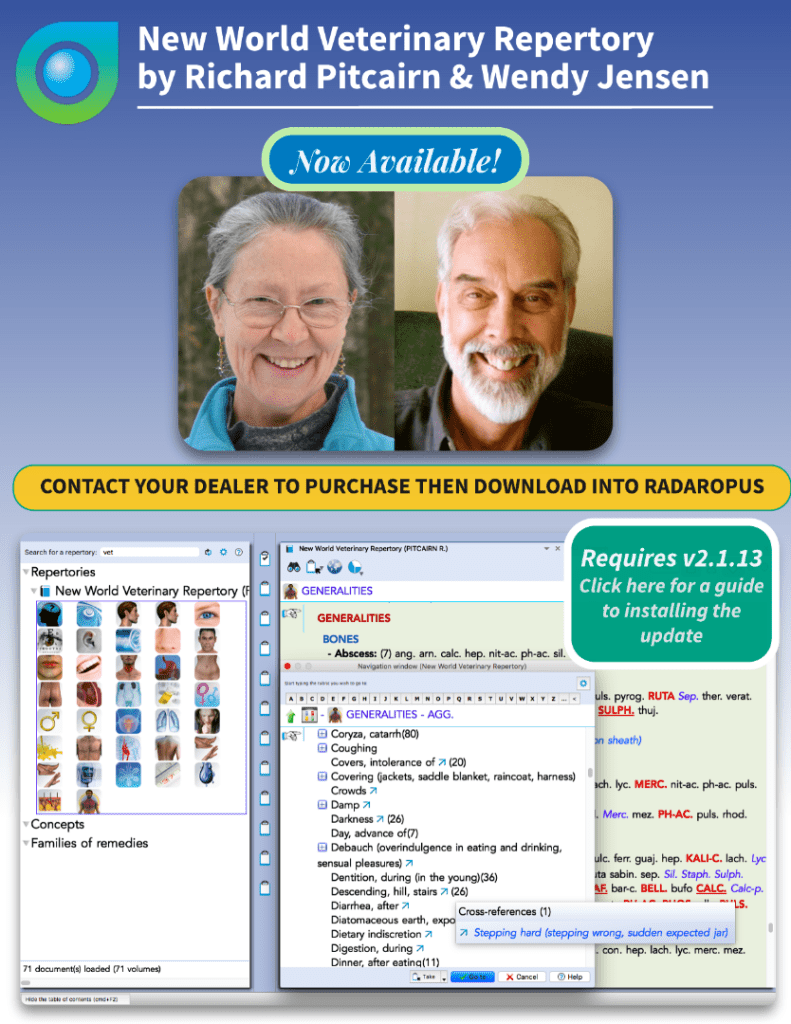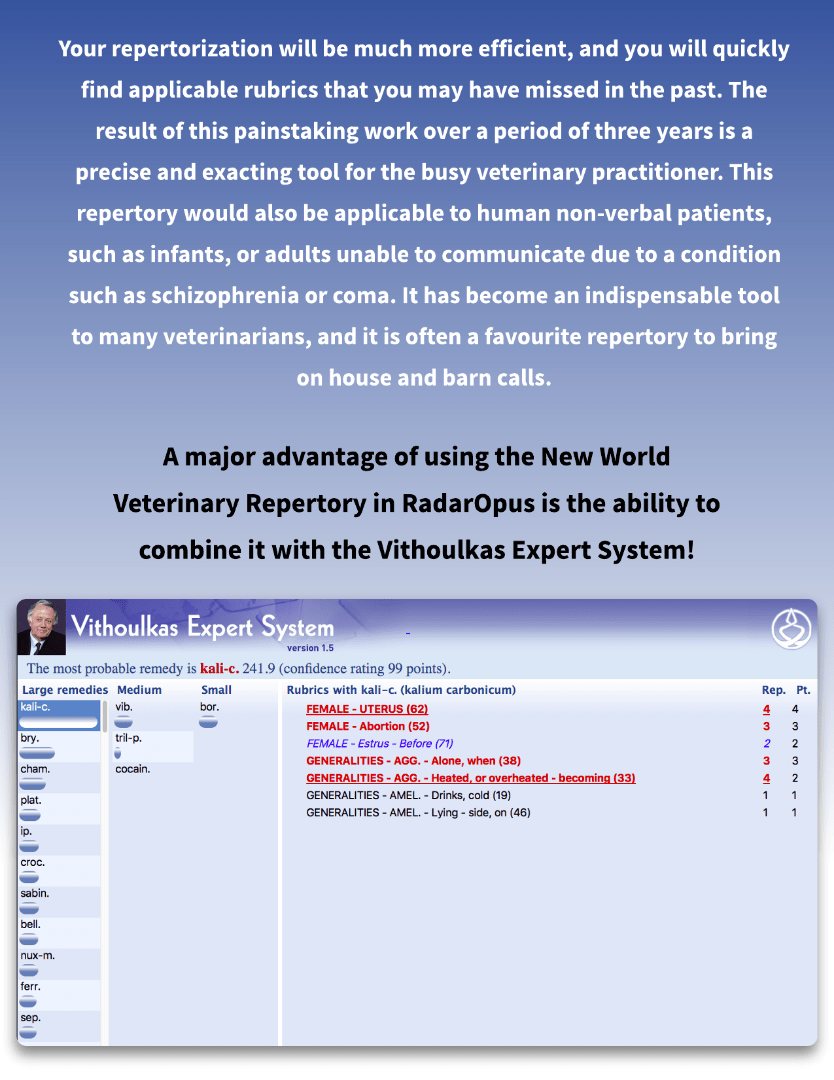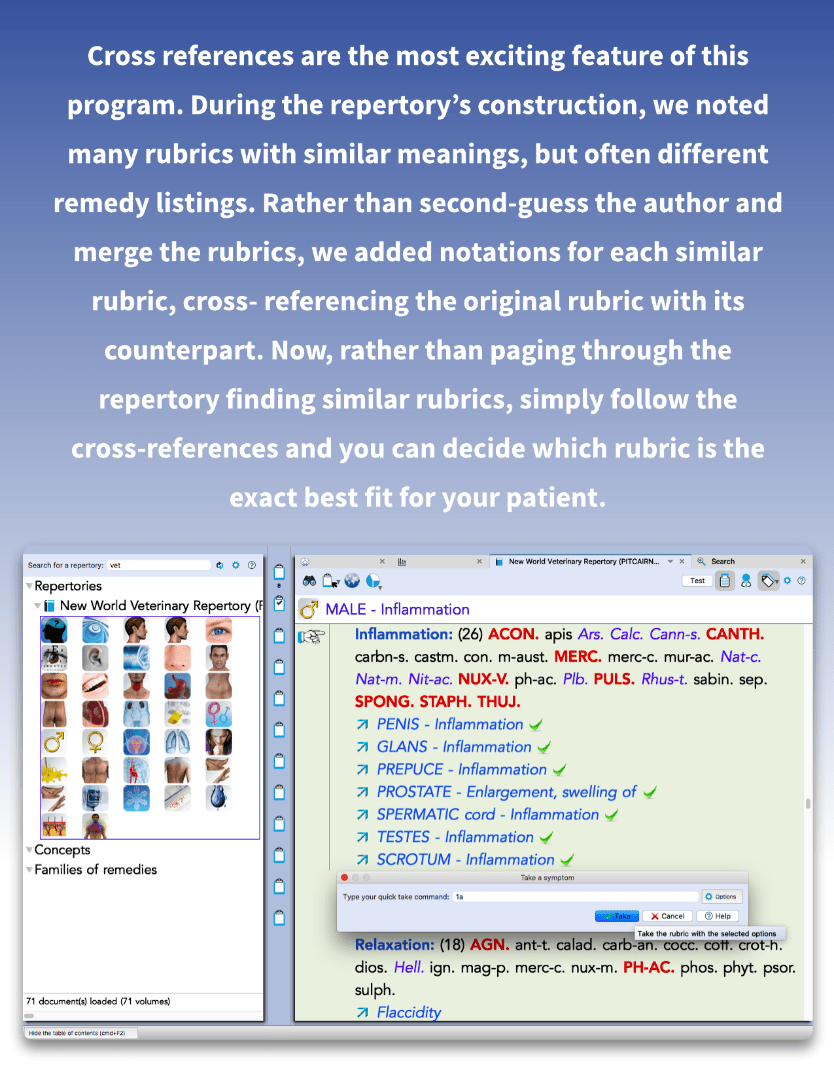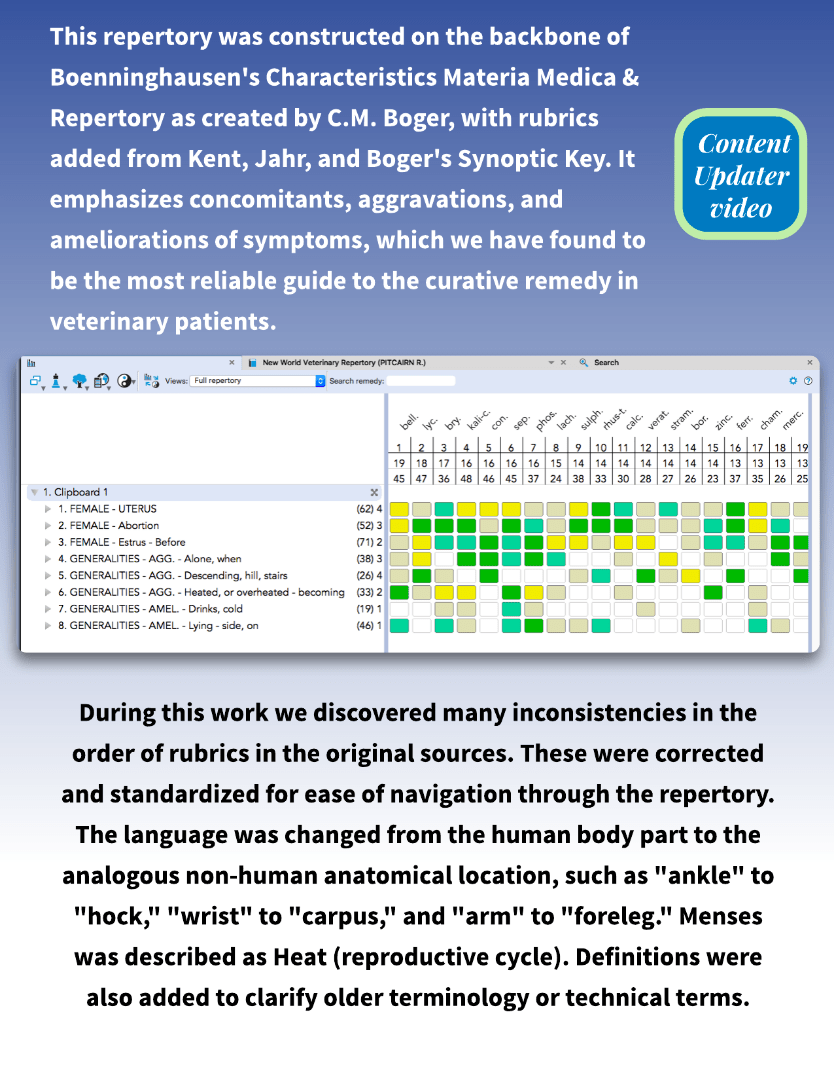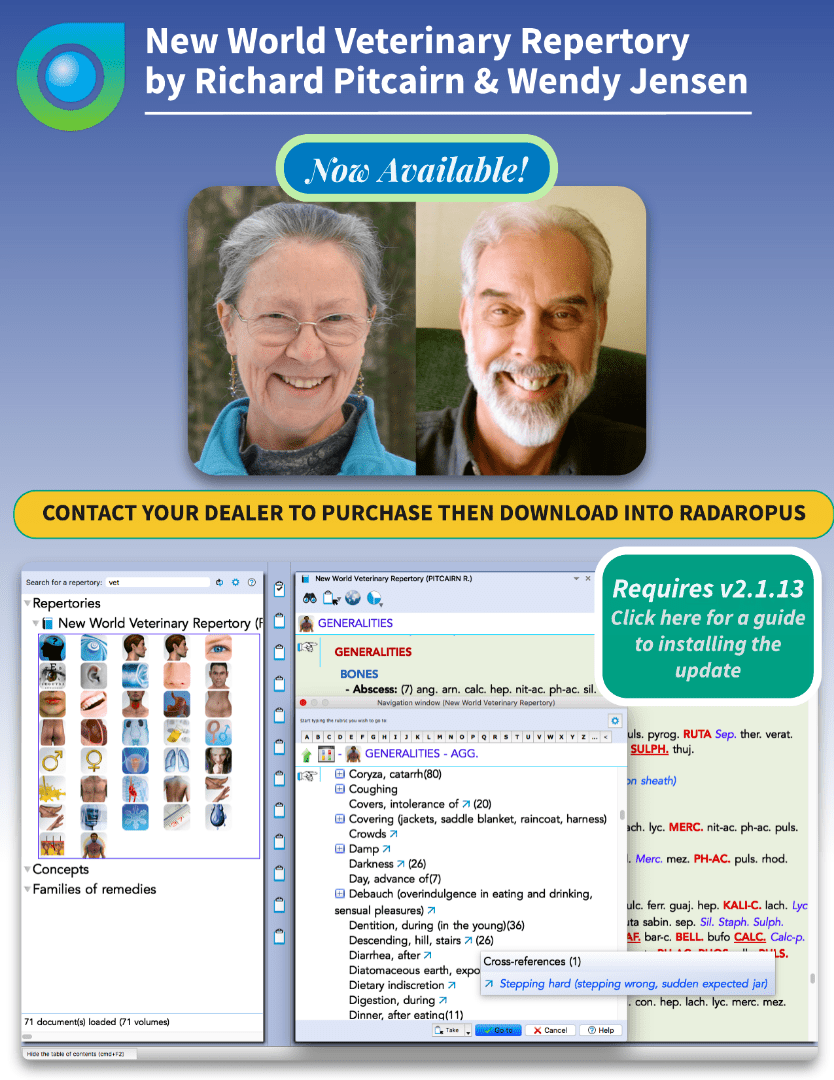This repertory was established on the backbone and foundation of Boenninghausen’s Characteristics Materia Medica & Repertory as constructed by C.M. Boger, with rubrics added from Jahr, Kent, and Boger’s Synoptic Key. It highlights and emphasizes concomitants, ameliorations and aggravations of symptoms, that we have established to be the most authentic guide to the curative medicine in veterinary patients.
The only first repertory originated exclusively for veterinary help. Of the more than 110 repertories brought out over the last two centuries, this is the first which has been carefully established to be of particular application to veterinary implementation and practice. Until now, veterinarians practicing the homeopathy of Hahnemann have used the repertories created for human beings –Boenninghausen’s Therapeutic Pocketbook, Kent’s, The Synthetic Repertory, Boger edition of Boenninghausen’s repertory etc. These are marvelous repertories for human help or use but can be a provocation and challenge to veterinarians for two reasons.
- They obtain a large amount of information, such as types of pain, sensations, and specific locations, which only humans can communicate with.
- Some of the very common non-human conditions are either minimally presented or completely absent from existing repertories. Throughout this work we discovered various inconsistencies in the sequence of rubrics in the original sources. These were standardized and corrected for ease of navigation all over the repertory. The language was replaced from the human body part to the analogous non-human anatomical location, such as,” “wrist” to “carpus”, “ankle” to “hock” and “arm” to “foreleg”. Menses were narrated as Heat (reproductive cycle). Definitions were also appended to clarify older technical terms or terminology.
Cross references are the most exciting feature of the New World Veterinary Repertory
During the repertory’s construction, we noted that many rubrics with homogenous and similar meanings, but often different medicine listings. slightly than second-guess the author and merges the rubrics, we append notations for each related and similar rubric, cross- referencing the primordial rubric with its counterpart. Hence, rather than paging across the repertory finding related and similar rubrics, simply follow the cross-references and you can decide and resolve which rubric is the exact best fit for your patient symptoms.
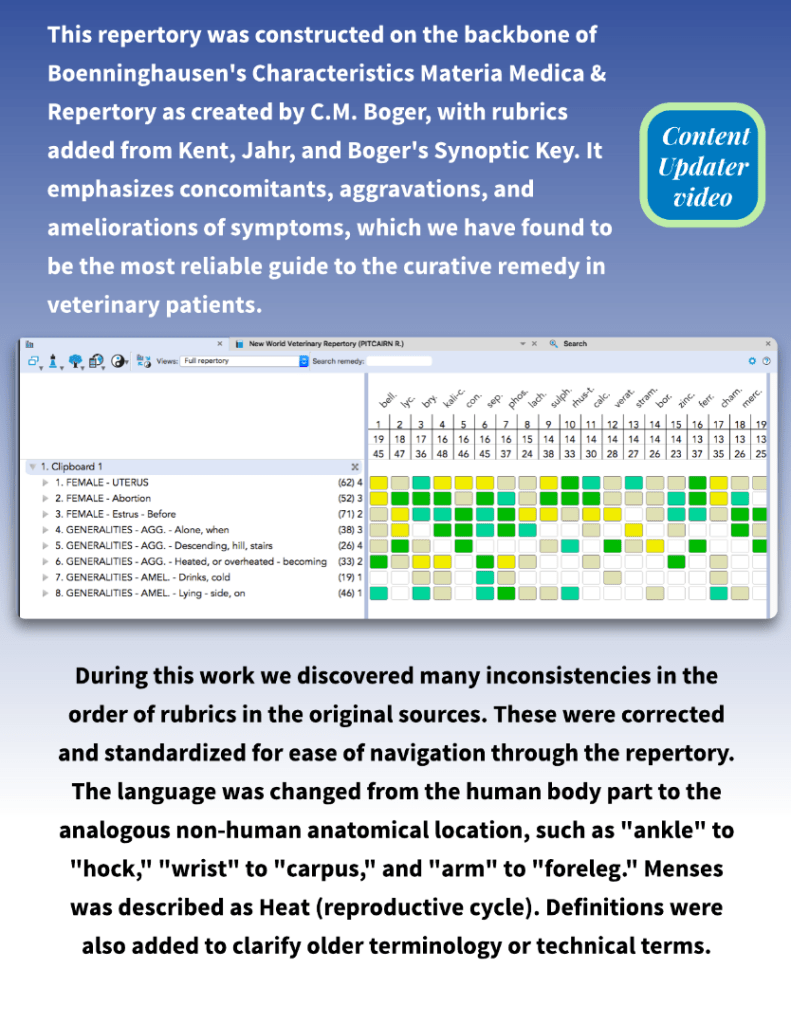
Your repertorization would be much more coherent and efficient, and you can quickly search applicable rubrics that you might have missed in the past. Now The outcome of this painstaking effort and work over a period of three years is an exacting and precise tool for the busy veterinary practitioner. This repertory would also be applicable to human non-verbal patients, such as infants, or adults unable to communicate due to a condition such as schizophrenia or coma. It has become an indispensable tool to many veterinarians, and it is often a favorite repertory to bring on house and barn calls.
